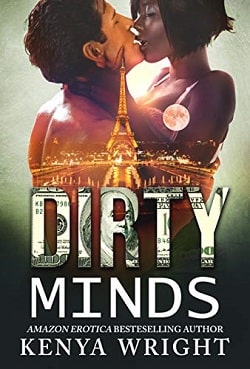Page 68 of Killer on the First Page
“Time of death?” Ned asked.
“An hour or so ago? Was easier to tell with the first one. He wasstill warm. This guy? Autopsy might give us a better idea. Hard to say.”
Andrew was disappointed. “OnCSI, it’s always ‘The deceased died between 9:31 and 9:37 p.m.’”
“As I was saying earlier, this isn’t an episode ofCSI.” Doc Meadows opened his case, unrolled a selection of forceps. “Lemme see, lemme see. Forceps for pulling sutures, for clamping arteries, ah! Here we go—Magill forceps. Used for intubation. That should do it.”
Long and flat and angled, with rounded circle tips, the Magill was ideal for extracting foreign objects lodged in the larynx. Doc pried open DePoy’s jaw and peered in. “Yep. Obstruction in the airway, all right.” Carefully, slowly, he inserted the length of the forceps into the dead man’s mouth, angling it in. He jiggled it about a bit and then—“Bingo!” He extracted a wet wad of paper from deep within Fairfax DePoy’s throat.
“Must’ve tried to swallow it,” said Doc.
“Or had it forced into his mouth,” said Ned.
Doc Meadows spread the damp page open on the table with his latex-covered hands, flattening it out.
“What is it?” Ned asked, leaning in to look.
“Something typewritten,” said Doc. “Looks like a page from a story.”
“May I make a prediction?” said Miranda before she even stepped in to look. “The top right-hand corner, the page number. It’s 298, yes?”
It was like a magic trick.
“Cool! How’d you know?” asked Doc.
“Gentlemen,” she said. “I do believe we’ve found the missing page of John D. Ross’s lost manuscript. The very page that Kane Hamady was trying so desperately to find when he locked himself in the reading room at the bookstore. A page that someone was willing to kill for.”
Crowding in, Ned read what was typed on the mangled page. “It’s a list of murders.”
It was indeed: a murder in a swimming pool, blamed on a schoolteacher; a murder in a casino, blamed on a color-blind professor; a murder at a theater, blamed on the left-handed stage manager; a murder on the Rocky Mountaineer train, blamed on a cross-eyed travel writer; a murder at a horse track, blamed on the jockey’s rival in love; a murder at a political rally, blamed on the candidate; the murder of a nurse, blamed on the doctor; the murder of the doctor, blamed on a nurse; a murder at a lake, blamed on a retired ambidextrous ophthalmologist—on and on it went, multitudinous murders, filling the page, typed single-spaced in one run-on sentence.
At the bottom, the typewriting stopped and a handwritten note followed, scrawled along the bottom of the page:
If you find this, I’m dead and the race is underway. Winner takes all, if he or she can solve the final puzzle: the killer’s real name, for there was only one killer over all these years, one killer behind each and every murder. One killer and one name only. But who? You will find the answer at the end of the book that matters most.
Andrew swallowed. “It reads like a confession.”
“Or an accusation—from beyond the grave,” said Ned.
“Or a challenge to the reader,” said Miranda. She was more focused on the state of the paper itself, on the myriad wrinkles in the page. Doc had smoothed it out, but it had been crumpled into a small ball and then rescued from the wet confines of a dead man’s throat, so naturally the surface was soggy and crinkled. But several distinct lines ran across the paper.
“Look,” said Miranda. “Here, here, and here.” She pointed out the creases. “The paper was folded. Three straight lines down the middle of the page, then three more on either side, spreading out like a fan.”
“Miranda, we’ve had two impossible crimes and two dead bodies, and you want to talk about the pattern of the creases on a piece of paper? It’s late. You can go home. And you, Andrew. You go with her. Doc, Holly, and I will take it from here.”
“May I see the deadbolt before I go?” Miranda asked.
Officer Holly, with Andrew’s help, managed to flip the door over on the floor with another heavy thud. On the other side, the barrel of the bolt was dented but intact, a circular metal chamber the length of someone’s forearm, with the bolt still firmly in place.
“Technically not a deadbolt,” said Ned. “That’s a basic sliding bolt. You lock it almost like you were loading a bolt-action rifle.”
A simple design. The barrel was attached to the back of the door, with a bolt that slid across into place. Locked securely, it would have been impossible to manipulate from the other side. Miranda looked again at the various cogs and bobbles that had sprung loose from the innards of the clock and were now scattered across the floor. She frowned.
“Don’t touch anything,” Officer Holly admonished. “I have to tent and photograph each of those.”
She went through, placing plastic yellow numbers next to each bit of potential evidence, as Miranda stepped back to consider the scene as a whole. It was like a scene written by Lachlan Todd.
Speaking of which...















